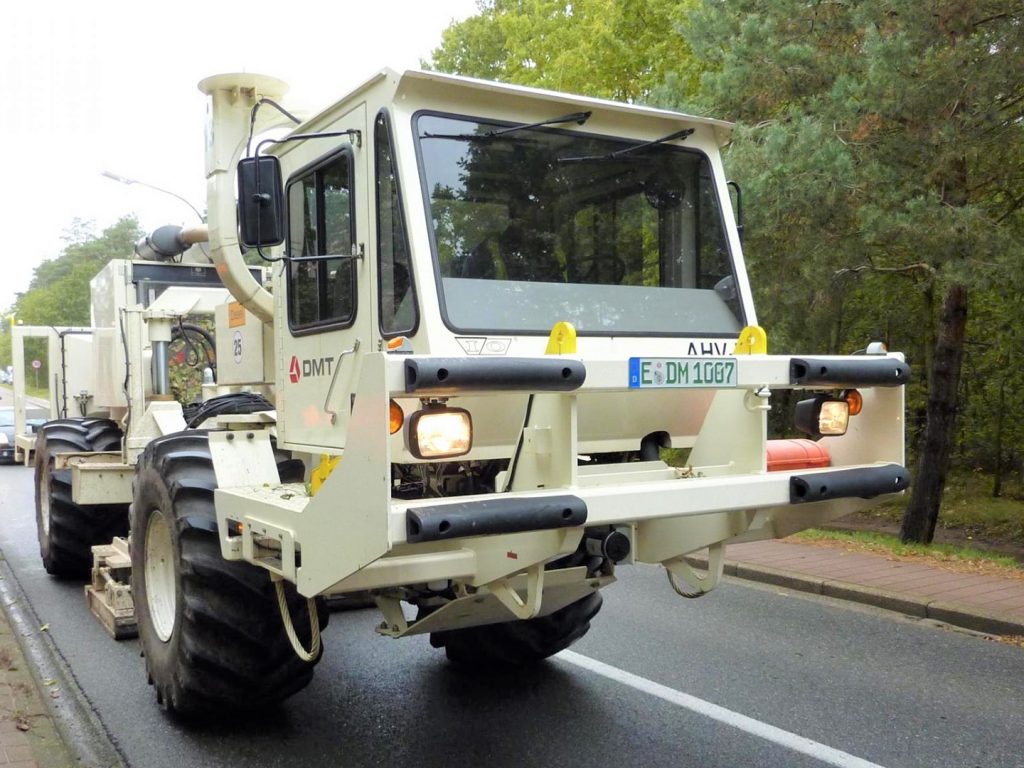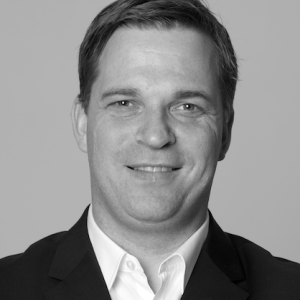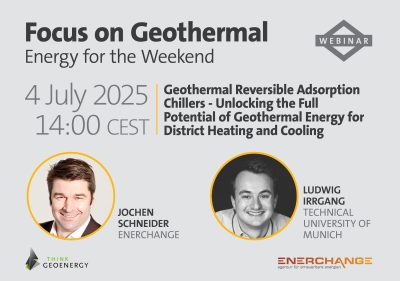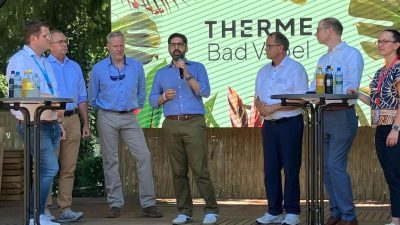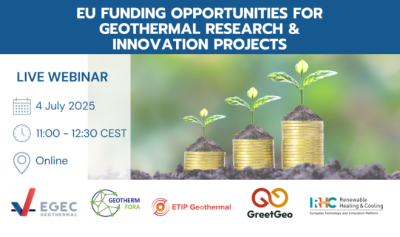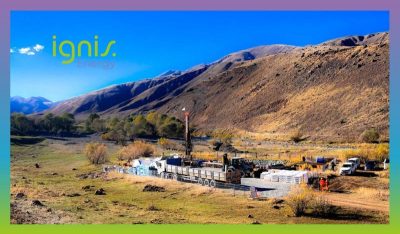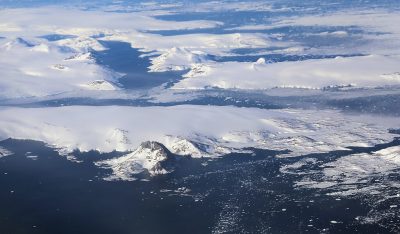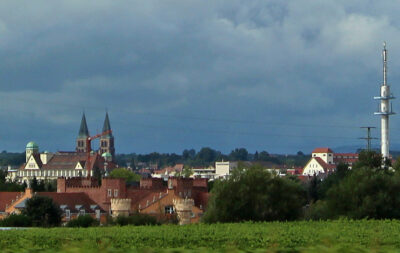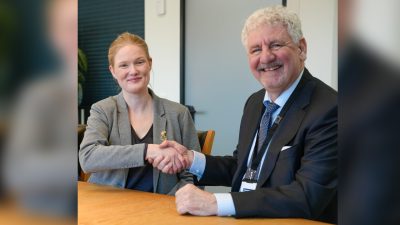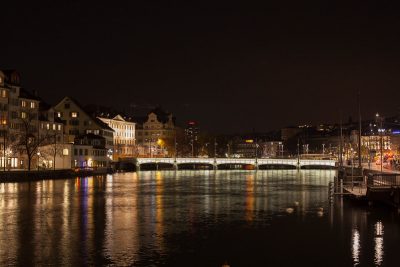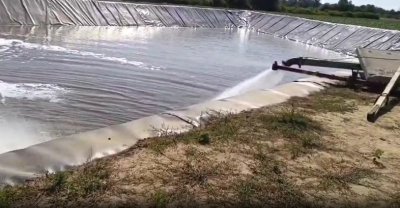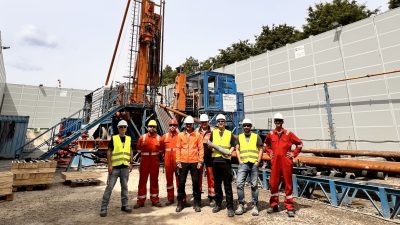Seismic measurements to explore deep geothermal energy in Hagen, Germany
For a planned project that aims to utilise geothermal for heat supply, Kabel Premium Pulp & Paper GmbH from Hagen, together with the Fraunhofer IEG will be starting seismic measurements to explore deep geothermal resources.
From Saturday, February 20 to February 24, 2021, two seismic profile lines will be measured in the urban areas of Hagen, Dortmund, Herdecke and Schwerte on behalf of Kabel Premium Pulp & Paper GmbH from Hagen, together with the Fraunhofer Institute for Energy Infrastructure and Geothermal Energy IEG.
The 2D seismic campaign is part of an exploration program with the help of which the structure of the subsurface is examined. The aim is to find out whether the location in Hagen is suitable for using geothermal energy at a depth of 4,000 m both technically and economically. Kabel Premium has set itself the goal of covering large parts of its process steam generation – currently around 500,000 MWh annually on the basis of natural gas – with renewable energies in the context of the research project “Geothermal Paper Drying” and the vision “Kabel ZERO”. For this purpose, the geothermal resource – more precisely deep geothermal energy at around 4,000 m – is to be explored and characterized around the location in Hagen. “The project helps to shape the energy transition towards renewable energies and to replace part of the fossil natural gas currently required for paper drying and to reduce CO2 emissions,” says Juha Ebeling, Managing Director of Kabel Premium Pulp & Paper GmbH.
The measuring principle
The seismic method works similarly to an echo sounder in seafaring; On the surface, special measuring vehicles generate artificial sound waves that are reflected on the various layers of rock in the underground. The reflected waves register sensitive measuring instruments, so-called geophones, on the earth’s surface.
Measurements are made along two measuring sections – the so-called seismic profiles – which are each approx. 11 kilometers long. For a good underground model up to a depth of 4,000 meters, it is essential that the measuring lines are long enough to achieve a corresponding depth resolution in the central area. “There are no alternative methods of obtaining information about the subsurface at a depth of 4,000 meters,” explains Dr. Oliver Ritzmann, geologist from Fraunhofer IEG.
While the first profile line runs from the northeast to the southwest, for the most part on the A1 motorway (Schwerte driveway to the Eichenkamp rest area), the second profile line extends from Schwerte-Ergste in the southeast via Dortmund-Syburg and Herdecke to Dortmund-Kirchhörde in the northwest.
Measurement sequence
The executing company for the measurement campaign is the DMT GROUP from Essen, which has many years of diverse measurement experience. The excitation of the seismic signals by the small trucks equipped with vibrating plates takes place largely on public areas, streets and paths. Every 50 meters there is a measuring point along the route, at which a ten-second signal is repeated three times within a minute. The vibration immissions that occur can be clearly noticeable in the worst case, but are in no case harmful to health. During the entire measurement, the vibrations are continuously monitored and corrected if necessary. Based on many years of experience with seismic measurement campaigns of this type, no damage to infrastructure or buildings is to be expected.
The measurements of the seismic profiles were checked and approved by the responsible supervisory authority, the Arnsberg district government. During the official approval process, the affected communities and responsible representatives of environmental, landscape and nature conservation were involved and their comments and suggestions were taken into account.
A few days before the measuring vehicles leave the route on February 20, the experts are distributing the geophones along the route. The geophones, which are around 30 centimeters in size, are firmly fixed in the ground with a pole. If geophones are installed on private property, the owners have been contacted in advance and written permits have been obtained. No project member comes unannounced or enters property without prior consultation. The collection of the geophones may take a few days after February 24th.
Due to the ongoing CoViD19 pandemic, no information event for local residents can take place. Instead, the project experts explain the course and goals of the measurement campaign in short videos. Videos, contact persons and further information can be found online at: https://www.kabelpaper.de/kabel-zero
The project
Kabel Premium Pulp & Paper GmbH, together with the Fraunhofer Institute for Energy Infrastructures and Geothermal Energy IEG from Bochum and the Fraunhofer Institute for Environmental, Safety and Energy Technology UMSICHT from Oberhausen, is investigating the possibilities of using geothermal energy from depths of around 4,000 meters at the site Hagen.
While the Fraunhofer IEG is investigating the geology of the subsurface at a depth of 4,000 meters by the end of 2022 in order to be able to estimate the extent to which the use of geothermal energy with expected temperatures of ~ 130 degrees C is even possible, Fraunhofer UMSICHT is developing process engineering concepts to be able to incorporate the heat that can be obtained from deep geothermal energy into the processes of paper drying.
Only after completion of the seismic investigation, i.e. after measurement and detailed evaluation of the data, can the project partners assess whether implementation and subsequent operation of a geothermal system in Hagen should be sought.
The research project and the seismic investigation are funded by the state of North Rhine-Westphalia and the European Union and supported by the EnergyAgency.NRW.
Source: Fraunhofer IEG press release
